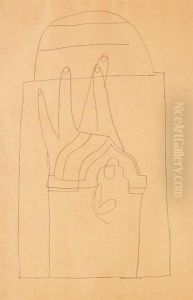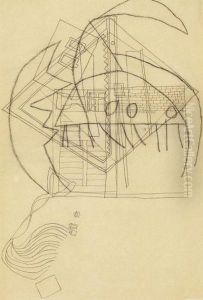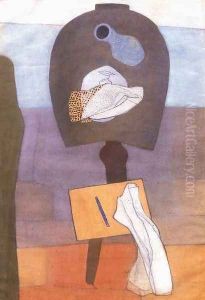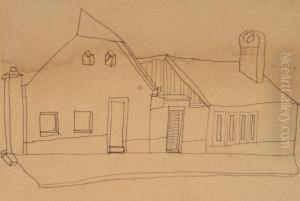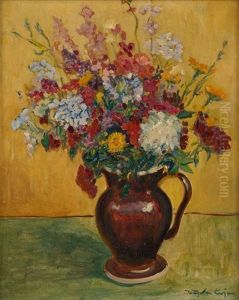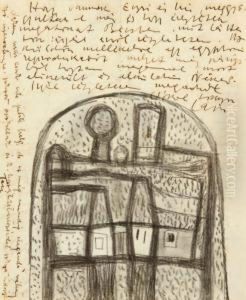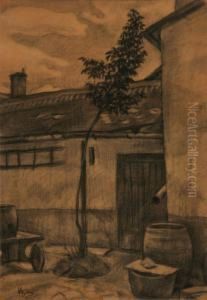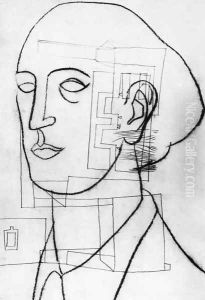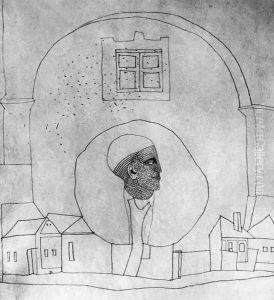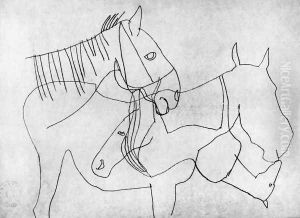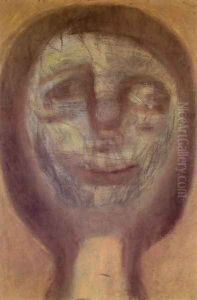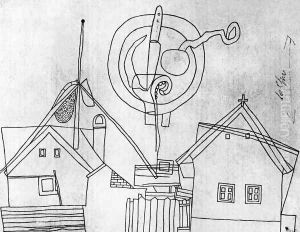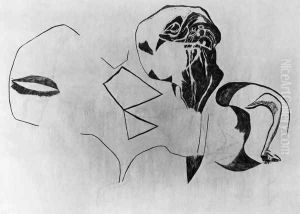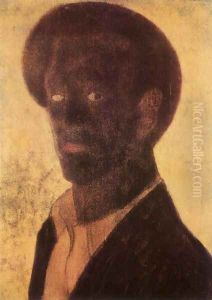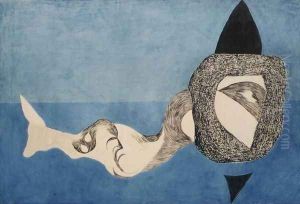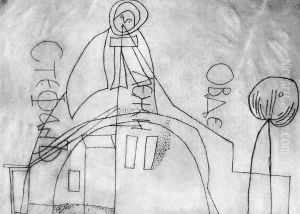Lajos Vajda Paintings
Lajos Vajda was a Hungarian painter, born on August 8, 1908, in Zalaegerszeg. He is considered one of the most significant figures in modern Hungarian art and is known for his unique and intense style that often reflected the social and political turmoil of his time.
Vajda began his artistic education in Budapest at the Hungarian Royal Drawing School in 1924. He continued his studies in Sándor Bortnyik's workshop, which was a hub for avant-garde artists and where he was exposed to the latest trends in European art, including Constructivism and Surrealism.
In 1928, Vajda moved to Paris, which was then the epicenter of the artistic world. There, he was influenced by the works of Pablo Picasso and the Surrealists, which would have a lasting impact on his own style. He assimilated elements of Cubism and Surrealism into his work, creating complex compositions that often dealt with existential themes and reflected his inner turmoil and the sense of alienation he felt in the interwar period.
Vajda returned to Hungary in 1930 and became associated with the group 'The European School,' which represented the progressive art scene in Hungary and opposed the conservative tendencies of the time. His work during this period was often characterized by a sense of impending doom and was heavily influenced by his Jewish identity and the rise of fascism in Europe.
As World War II approached, Vajda's work became increasingly apocalyptic. His paintings and drawings from this period are filled with distorted figures and fragmented scenes that seem to presage the coming destruction. Despite the dark themes, his work is often noted for its technical precision and the powerful emotional resonance it conveys.
Tragically, Lajos Vajda's life and artistic career were cut short by illness. He died on March 7, 1941, in Szentendre, at the young age of 32. Despite his brief career, Vajda left behind a body of work that continues to be celebrated for its intensity and its unique contribution to Hungarian and European art.


